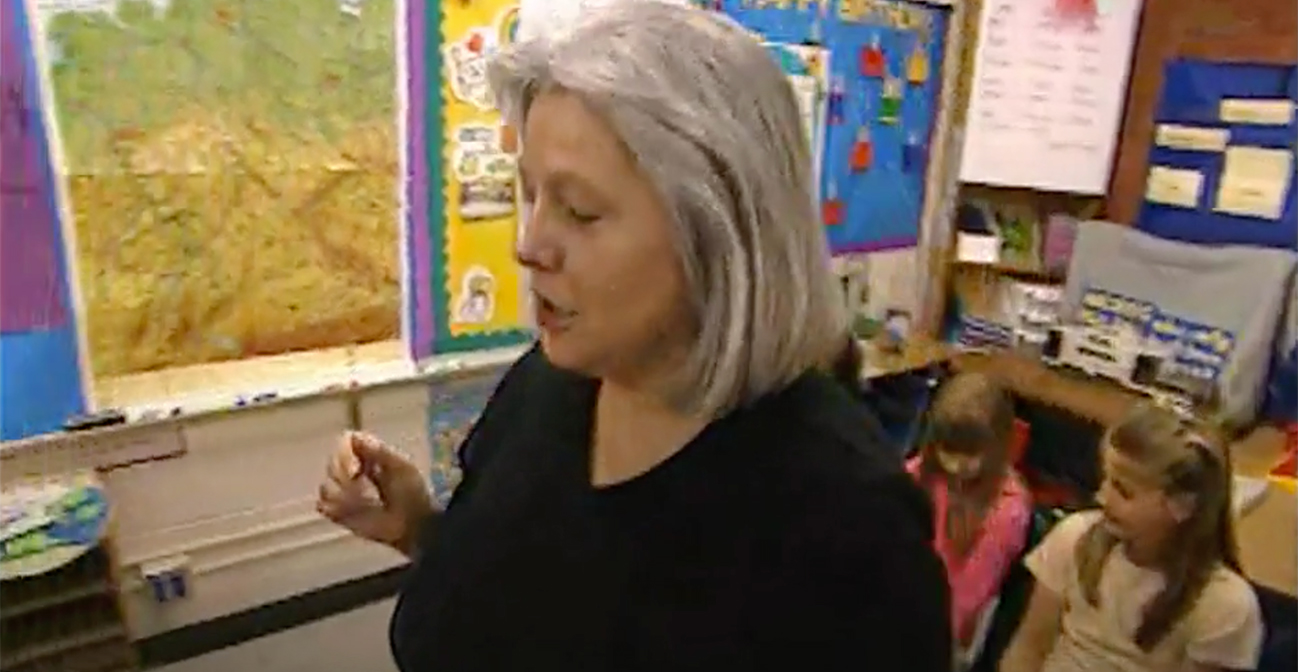Join us for conversations that inspire, recognize, and encourage innovation and best practices in the education profession.
Available on Apple Podcasts, Spotify, Google Podcasts, and more.

CLASSROOM AT A GLANCE
Teacher
Margita Haberlen
Language
German
Grades
3
School
Austin Elementary School, Dunwoody, Georgia
Lesson Date
March 28
Class Size
23
Schedule
30 minutes daily
In this lesson, students review the months, seasons, and German holidays. They practice vocabulary and develop oral and written comprehension while singing songs, solving riddles, and participating in other activities. They also use a Venn diagram to compare the German holiday Fasching with Halloween.
Communication: Interpersonal
Cultures: Practices, Products
Connections: Making Connections
Comparisons: Cultural Comparisons
authentic materials
Authentic materials are resources that have been developed specifically for native speakers. These include print, audio, and visual materials.
Foreign Language in the Elementary School (FLES)
This elementary school model organizes instruction around a scope and sequence taught by a qualified foreign language teacher. Its goals include developing language proficiency with an emphasis on oral skills, as well as providing a gradual introduction to literacy, building cultural knowledge, and tying language learning to the content of the early grades’ curriculum. FLES programs vary, especially in the number of meetings per week or minutes per session. See also Foreign Language Exploratory Program (FLEX).
information gap
Information gap is a questioning technique in which learners respond to a question whose answer is unknown to the questioner. This contrasts with “display questions” that seek obvious responses. Example of an information gap question: What did you buy at the mall? Example of a display question: What color is your sweater?
Venn diagram
A Venn diagram is a type of graphic organizer consisting of two partially overlapping circles. A Venn diagram helps learners see the similarities and differences between two topics. Each circle represents one topic (for example, “U.S.” and “Target Culture”). Common characteristics are recorded in the overlapping area between the circles. Information unique to each topic is recorded in the area outside the overlap. The Venn diagram is a strong visual support for concrete and abstract comparisons.

Reflect on Your Practice
As you reflect on these questions, write down your responses or discuss them as a group.
Watch Other Videos
Watch other videos in the Teaching Foreign Languages K–12 library for more examples of teaching methodologies like those you’ve just seen. Note: All videos in this series are subtitled in English.
Put It Into Practice
Try these ideas in your classroom. Where it’s not already evident, reflect on how to adapt an idea that targets one performance range for application to other performance ranges.
World-Readiness Standards for Learning Languages
The World-Readiness Standards for Learning Languages create a roadmap to guide learners to develop competence to communicate effectively and interact with cultural understanding. This lesson correlates to the following Standards:
Interpersonal Communication
Relating Cultural Practices to Perspectives
Relating Cultural Products to Perspectives
Making Connections
Learners build, reinforce, and expand their knowledge of other disciplines while using the language to develop critical thinking and to solve problems creatively.
Cultural Comparisons
Curriculum References
Georgia Elementary School Foreign Languages (ESFL) Model Program
Margita Haberlen’s Additional Resources
Web Resources:
Goethe Institute
Teaching materials, courses, and seminars on German language, geography, and culture (Available in English and German)